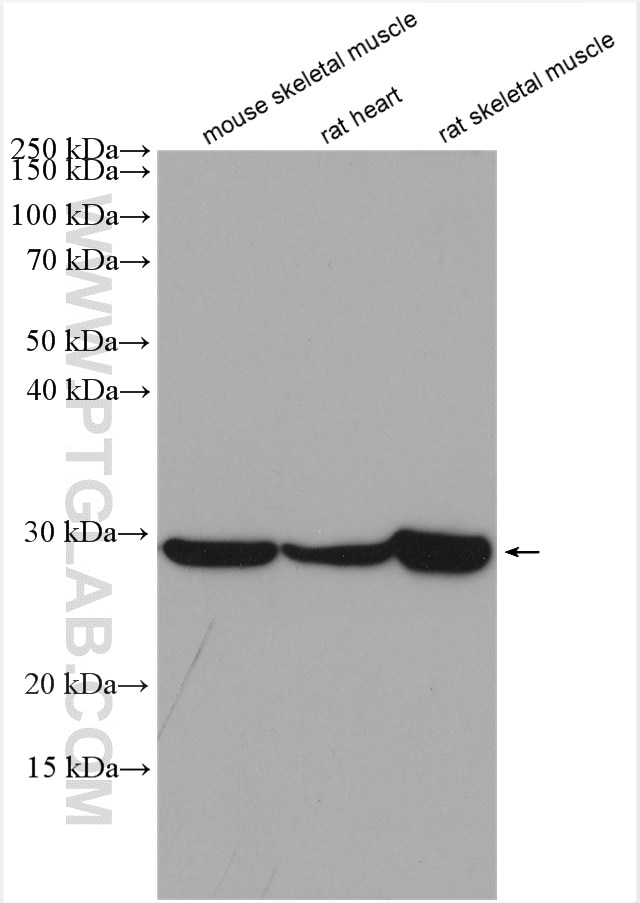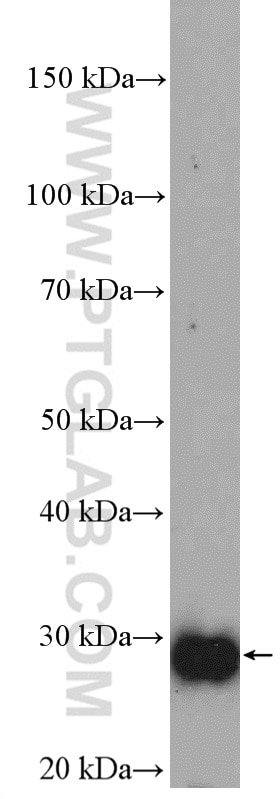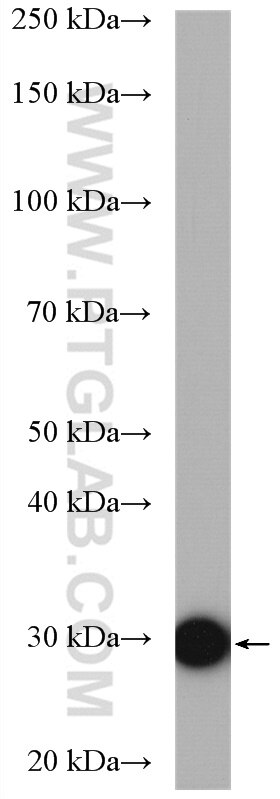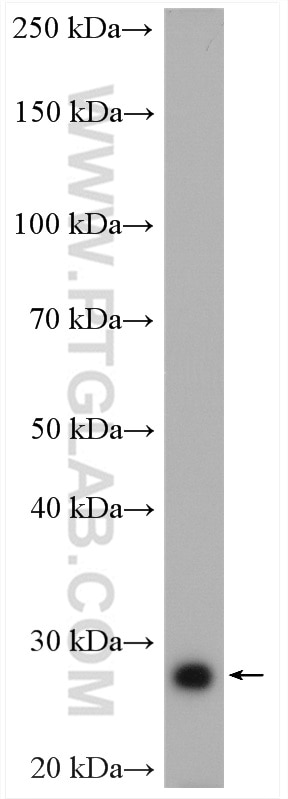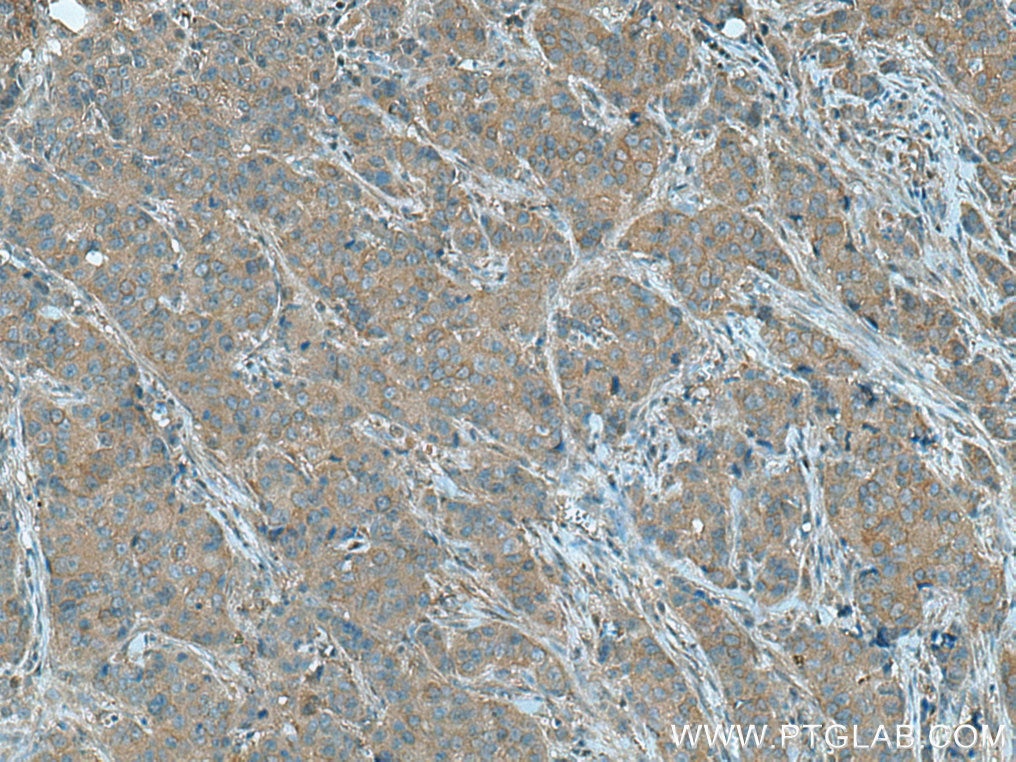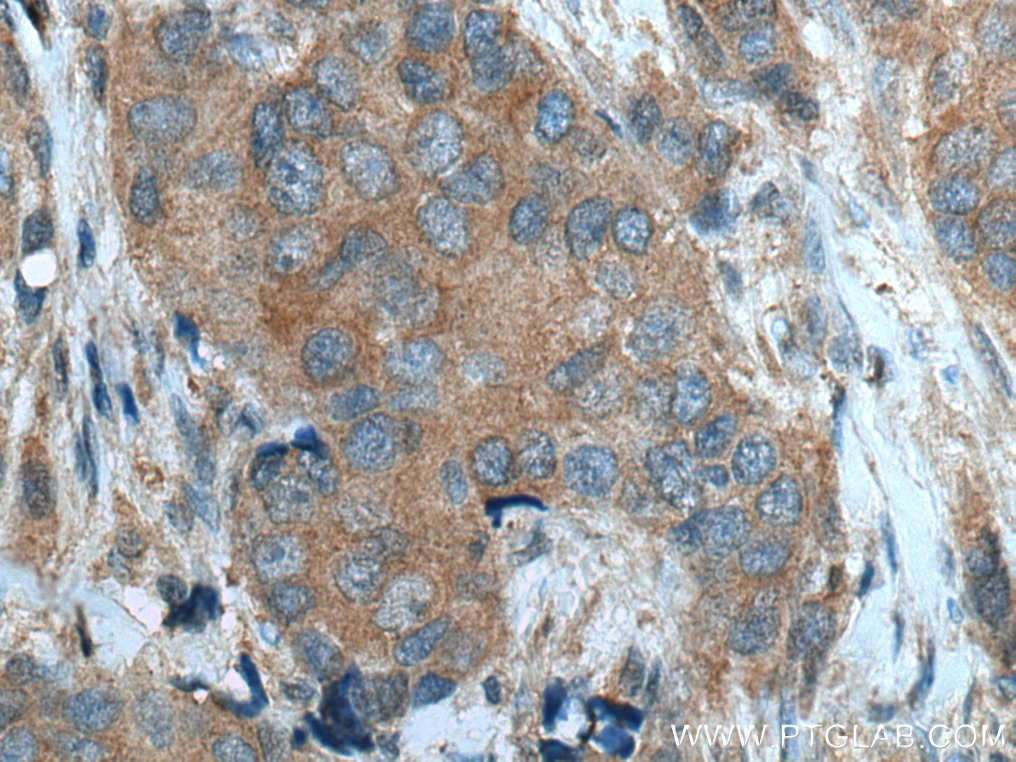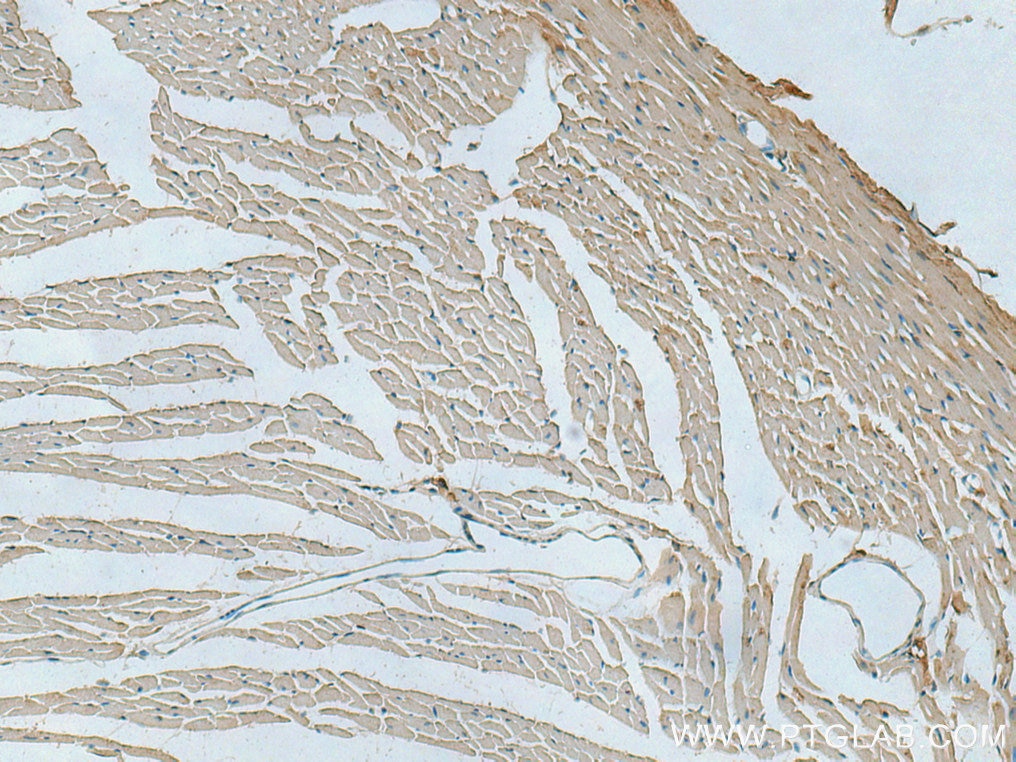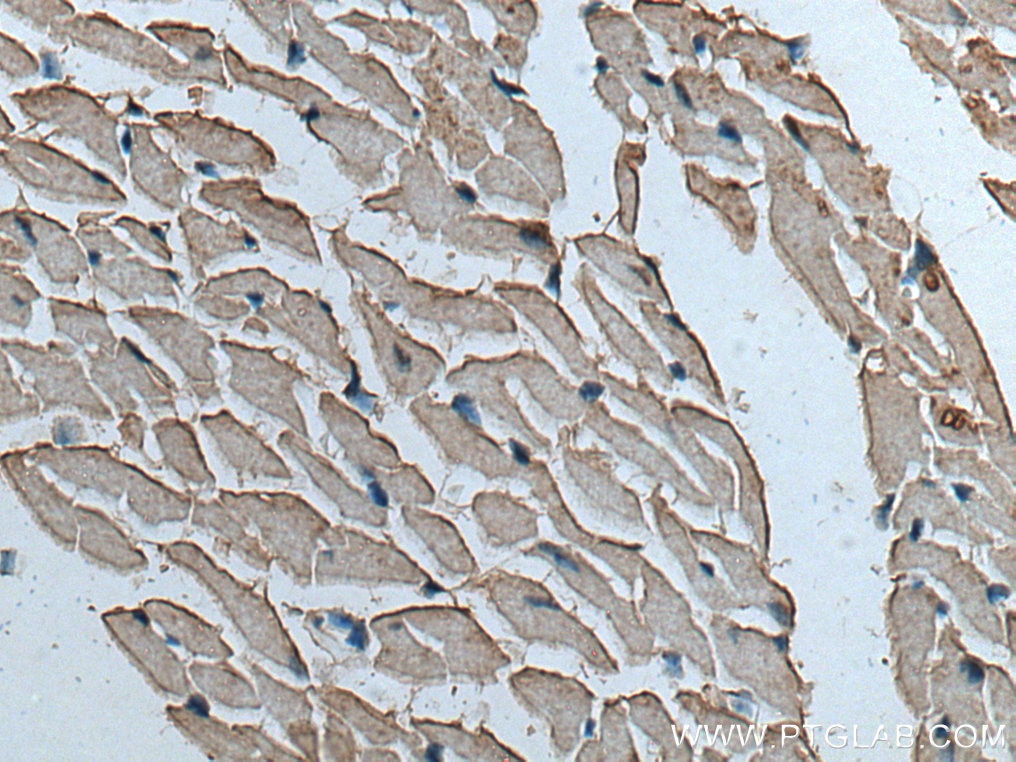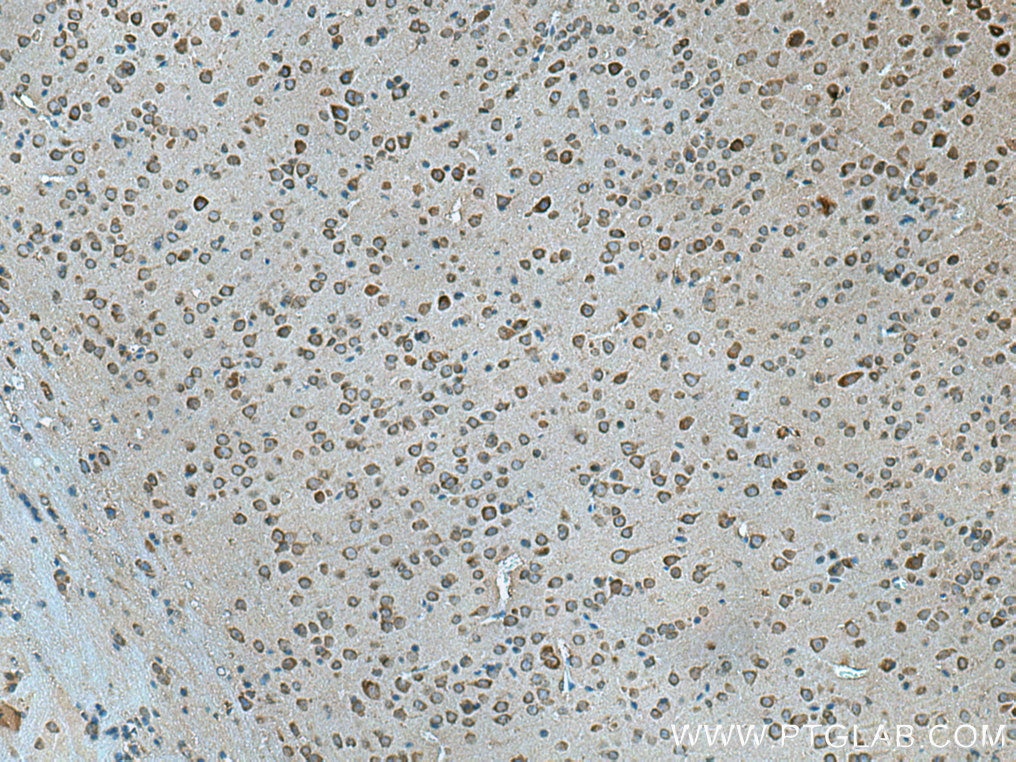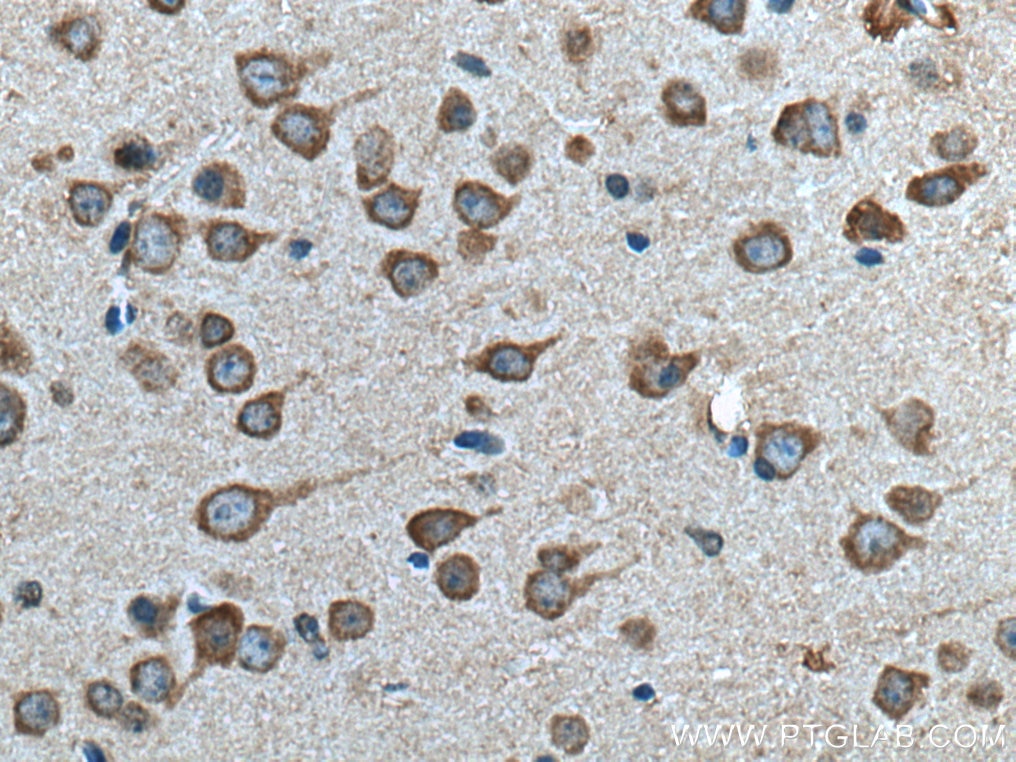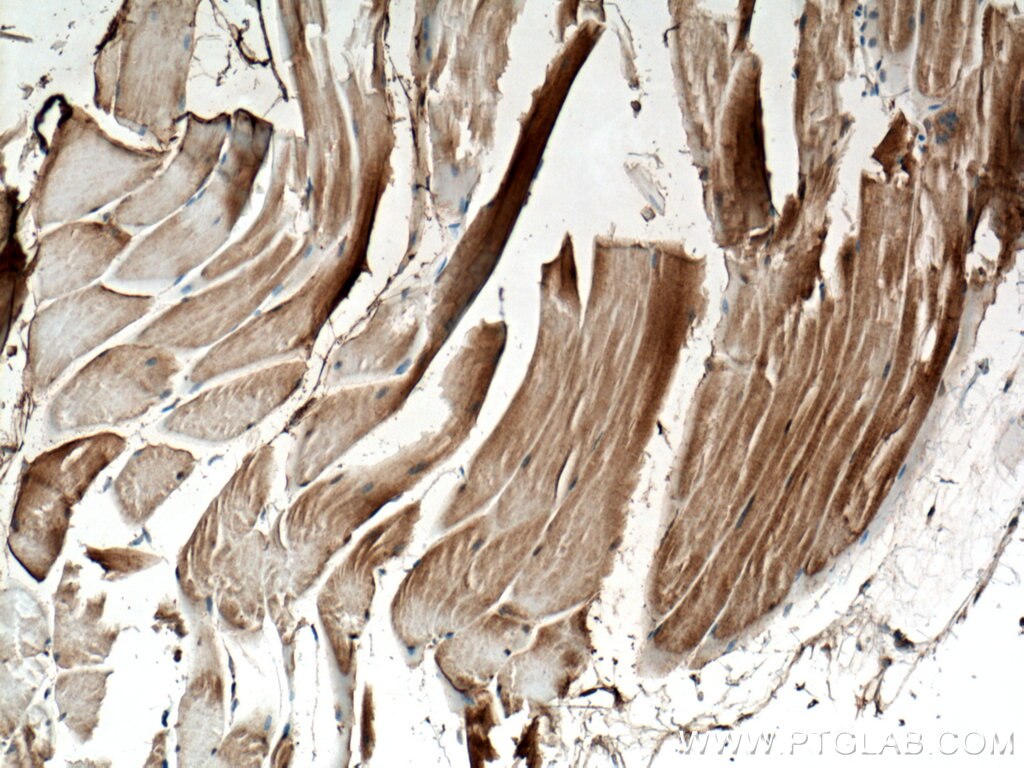Anticorps Polyclonal de lapin anti-PGAM2
PGAM2 Polyclonal Antibody for WB, IHC, ELISA
Hôte / Isotype
Lapin / IgG
Réactivité testée
Humain, rat, souris et plus (1)
Applications
WB, IHC, IF, IP, ELISA
Conjugaison
Non conjugué
N° de cat : 15550-1-AP
Synonymes
Galerie de données de validation
Applications testées
| Résultats positifs en WB | tissu cardiaque de souris, cellules HeLa, tissu cardiaque de rat, tissu de muscle squelettique de rat, tissu de muscle squelettique de souris |
| Résultats positifs en IHC | tissu de cancer du sein humain, tissu cardiaque de souris, tissu cérébral de souris, tissu de muscle squelettique de souris il est suggéré de démasquer l'antigène avec un tampon de TE buffer pH 9.0; (*) À défaut, 'le démasquage de l'antigène peut être 'effectué avec un tampon citrate pH 6,0. |
Dilution recommandée
| Application | Dilution |
|---|---|
| Western Blot (WB) | WB : 1:1000-1:6000 |
| Immunohistochimie (IHC) | IHC : 1:50-1:500 |
| It is recommended that this reagent should be titrated in each testing system to obtain optimal results. | |
| Sample-dependent, check data in validation data gallery | |
Applications publiées
| WB | See 6 publications below |
| IHC | See 1 publications below |
| IF | See 1 publications below |
| IP | See 1 publications below |
Informations sur le produit
15550-1-AP cible PGAM2 dans les applications de WB, IHC, IF, IP, ELISA et montre une réactivité avec des échantillons Humain, rat, souris
| Réactivité | Humain, rat, souris |
| Réactivité citée | Humain, porc, souris |
| Hôte / Isotype | Lapin / IgG |
| Clonalité | Polyclonal |
| Type | Anticorps |
| Immunogène | PGAM2 Protéine recombinante Ag7908 |
| Nom complet | phosphoglycerate mutase 2 (muscle) |
| Masse moléculaire calculée | 29 kDa |
| Poids moléculaire observé | 29 kDa |
| Numéro d’acquisition GenBank | BC001904 |
| Symbole du gène | PGAM2 |
| Identification du gène (NCBI) | 5224 |
| Conjugaison | Non conjugué |
| Forme | Liquide |
| Méthode de purification | Purification par affinité contre l'antigène |
| Tampon de stockage | PBS with 0.02% sodium azide and 50% glycerol |
| Conditions de stockage | Stocker à -20°C. Stable pendant un an après l'expédition. L'aliquotage n'est pas nécessaire pour le stockage à -20oC Les 20ul contiennent 0,1% de BSA. |
Informations générales
Phosphoglycerate mutase (PGAM), an important enzyme in the glycolytic pathway, catalyzes the transfer of a phosphate group between the 2 and the 3 positions of glyceric acid. The muscle-specific isoform (type M, PGAM2) of phosphoglycerate mutase (PGAM) is a housekeeping enzyme and it catalyzes the conversion of 3-phosphoglycerate into 2-phosphoglycerate in the glycolysis process to release energy. It is encoded by the Pgam2 gene. In addition, it is demonstrated that PGAM2 locates both in cytoplasm and nuclei, and takes part in the glycometabolism process of cytoplasm and nuclei(PMID: 18499067). Defects in PGAM2 are the cause of glycogen storage disease type 10 (GSD10). This antibody may also recognize PGAM1 and PGAM4 due to the high homology.
Protocole
| Product Specific Protocols | |
|---|---|
| WB protocol for PGAM2 antibody 15550-1-AP | Download protocol |
| IHC protocol for PGAM2 antibody 15550-1-AP | Download protocol |
| Standard Protocols | |
|---|---|
| Click here to view our Standard Protocols |
Publications
| Species | Application | Title |
|---|---|---|
EMBO Rep METTL14 modulates glycolysis to inhibit colorectal tumorigenesis in p53-wild-type cells | ||
Sci Rep Proteomic analysis indicates that mitochondrial energy metabolism in skeletal muscle tissue is negatively correlated with feed efficiency in pigs. | ||
J Proteomics Proteomics analysis of asthenozoospermia and identification of glucose-6-phosphate isomerase as an important enzyme for sperm motility. | ||
Redox Biol Unbalanced redox status network as an early pathological event in congenital cataracts | ||
Cell Res Low glucose metabolite 3-phosphoglycerate switches PHGDH from serine synthesis to p53 activation to control cell fate |
Avis
The reviews below have been submitted by verified Proteintech customers who received an incentive for providing their feedback.
FH Marco (Verified Customer) (07-04-2024) | A reliable antibody for westernblots
|
